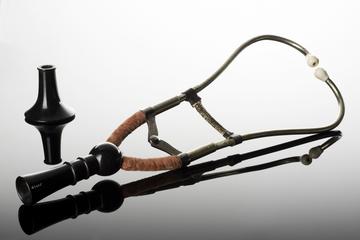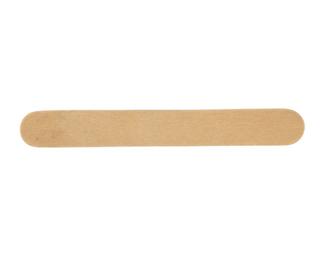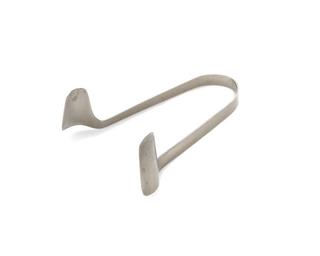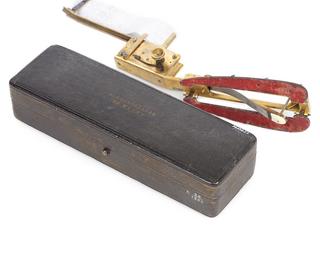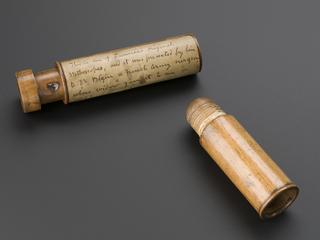
Bloch type sphygmomanometer, Paris, France, 1881-1913
- maker:
- Charles Verdin




Bloch sphygmomanometer by Verdin, in silk (deteriorating) lined case, by C. Verdin, French
The first sphygmomanometer was devised by Samuel Von Basch (1837-1905) in 1881. It measured blood pressure by slowly applying a measured force to the skin over an artery until the pulse disappeared. However, the instrument was not widely used as doctors were wary of replacing traditional methods of using their fingers to determine pulse or that any information from the sphygmomanometer was useful. This variation was devised by A. M. Bloch. It uses a spring to record the weight necessary to obliterate the pulse. The device was made in Paris by scientific instrument maker Charles Verdin.
Details
- Category:
- Clinical Diagnosis
- Collection:
- Sir Henry Wellcome's Museum Collection
- Object Number:
- A600404
- Materials:
- case, wood, case, leather, case, silk, cream, case, velvet, purple, case, brass, case, steel, instrument, brass, instrument, steel and instrument, steel (blue)
- Measurements:
-
overall: 30 mm x 163 mm x 40 mm, .11kg
- type:
- sphygmomanometer
- credit:
- Brunton, Sir Thomas Lauder
